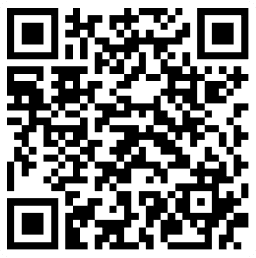
Hotels in Canada
Popular Hotels in Canada
Discover what you like
Destinations to Discover




More about hotels Canada
Canada is the second largest country in the world, right after Russia. It is located in the north of North America. The country covers almost 10 million square kilometres, extending from the Atlantic to the Pacific Oceans and the Arctic Ocean on the northern side. Canada is bordering with the United States at the southern side of the country. This border happens to be the longest shared border in the world at almost nine thousand kilometres. Canada also shares a maritime boundary with Denmark, Greenland and surprisingly France with the islands of Saint Pierre and Miquelon, at the easternmost side of the country.
It is generally assumed that the people who first came to North America, including present-day Canada, had migrated from Siberia via the Bering Land bridge; land and maritime area that is bounded by the Lena River of Russia on the west and the Mackenzie River of Canada on the east side. It is estimated that the migration happened at least 14 thousand years ago. These early settlers of the indigenous societies shared some characteristics such as permanent settlements, agriculture, complex societal hierarchies and trading networks. In the 15th to 16th centuries, some of these cultures collapsed and disappeared when the European explorers arrived. These European started to colonise the area, dwindling the number of the indigenous people to the point of a total diminished of some First Nations (the predominant indigenous peoples in Canada) such as the Beothuk.
The colonisation by the European began with the settlement of the Norsemen around 1000 AD. In 1497, an Italian seafarer explored and claimed Canada’s Atlantic coast in the name of King Henry VII of England. In 1534, a French explorer explored the Gulf of Saint Lawrence. He eventually planted a 10-metre cross with words of ‘Long Live the King of France,’ followed by taking possession of the territory in the name of King Francis I. In 1583, the Englishmen came and found the St John’s, Newfoundland. This is the first North American English colony. A series of wars erupted between the Kingdom of Great Britain and the Kingdom of France over the control the territories where they had colonised, including Canada. These wars eventually led to several treaties and acts being made; other wars erupted in other countries that played some roles and indirectly resulted in divided provinces in Canada with English-speaking located in Upper Canada (now Ontario) and the French-speaking in Lower Canada (now Quebec).
Canada entered World War I because Britain still had control over its foreign affairs under the Constitution Act 1867. In 1919, Canada joined, independently of British, the League of Nations, a conference to end World War I and maintained world peace. In 1931, an act from the Parliament of the United Kingdom, the Statute of Westminster 1931, brought and affirmed independence from the British Empire.
Today, Canada is described as a full democracy, with a tradition of liberalism and an egalitarian, moderate political ideology. The founding principles of the Canadian government are peace, order and good government. The country has a parliamentary system within the context of a constitutional monarchy. The Canadian monarchy is a separate legal institution from the United Kingdom even though these two offices are held by the same person, Queen Elizabeth II. Most of the federal royal duties in Canada is carried by the Queen’s representative, the Governor General of Canada.
Canada has its capital in Ottawa, the country’s fourth-largest city right after Toronto, Montreal and Vancouver. The population of Canada is estimated to be around 37 million people. There are two official languages in Canada, English and French. Canada is a cultural mosaic, a collection of regional ethnic subcultures and multiculturalism is one of the country ‘s significant accomplishments. Historically, the cultures and traditions of the Canadians are heavily influenced by the British, French and the indigenous. Canada has a freedom of religion that is constitutionally protected right. This gives an individual to practice any religion without limitation or interference. Canada does not have any official church or religion. Roman Catholics are the largest group of people in Canada, followed by other Christians, and atheists.
How to Get There
By Flight
Flying to Canada is the best way to travel to the country. It is also the fastest mode of transportation. However, currently, no direct flights are going into any international airports in Canada from Singapore. Singapore Airlines also have terminated their routes to Canada. There are only several airlines that fly from Singapore to Canada with at least one stopover. A flight from Singapore to Ottawa, Canada will take almost 30 hours including the stopovers. The one-way ticket starts from around SGD 1,500.
A Singaporean passport holder does not require a visa to go to Canada. However, an Electronic Travel Authorisation (eTA) is required. eTA is an electronic document, and it is required for those who are entering Canada via air. The eTA is only valid for a short period; 90 days’ maximum of staying in Canada for either vacation, business, transit and medical visits. An eTA cost at 7 Canadian dollars, around SGD 7.30. It is advised that the eTA must be completed at least 72 hours before the departure date.
What to Do There
Banff National Park
The oldest national park in Canada, the Banff National Park was established in 1885. It covers an astounding 6,641 square kilometres of mountainous terrain, glaciers and ice fields, forests and alpine landscapes. The Banff National Park is a perfect place to enjoy the nature and beauty of Canada, especially its Rocky Mountains. There are several unique thermal hot springs apart from the crystal clear lakes. Plenty of mammal species such as the bighorn sheep, elk, wolverine are easily found in the national park. There are also hundreds of bird species.
The Banff National Park is one of the most visited national parks in Canada, receiving more than three million tourists annually. A pass is required to enter the Banff National Park. A group of two to seven people travelling in a single vehicle will have to pay around C$20 for a day’s pass. The pass can be purchased online. If stopping inside the national park, a permit is required. Banff National Park is a great place for an outdoor enthusiast.
Fraser River
This is the longest river in British Columbia, rising from the Fraser Pass, a mountain in the Rocky Mountains. It is also the 10th longest in the country. The Fraser River is named after Simon Fraser, the man who had led an expedition in 1808. The river stretches for almost 1400 kilometres into the Strait of Georgia at the city of Vancouver. Fraser River is the home to the world’s largest salmon migration and the most productive salmon fishery in the world. Fraser River is a great place for boating activities. There are also camping facilities on the river banks, provided by various small companies. It is an ideal camping venue for those who love adventurous activities.
Where to Stay
Atrium Inn Vancouver
Atrium Inn Vancouver is hotel located in the city of Vancouver. The hotel has several types of room in its building, suitable for any types of travellers. The rooms are spacious, comfortable and affordable. The rate starts from as low as S$133 a night, and this includes the free breakfast service for the guests. All of the rooms have the same and basic in-room amenities such as a television with premium channels, coffee/tea maker and free Wi-Fi connection. For comfort, the hotel equipped each room with premium bedding, blackout drapes and heat and air-conditioner. The rooms also include free local calls and daily newspapers. Atrium Inn Vancouver is near to several parks in the city. There are plenty of restaurants surrounding the hotel, serving from local dishes to Vietnamese and Chinese dishes among others.
Days Inn by Wyndham Vancouver Airport
Though the location of the inn is not strategic and about twenty minutes away from the city, the Days Inn is a great place to stay. The inn is much closer to the Vancouver airport. Days Inn has just one type of room, the Standard room with an option to either have two Queen beds or a King bed. Both of these options have the same price, starting from S$ 119 a night. Their rooms are spacious, comfortable and clean. Days Inn also include some basic in-room amenities such as a flat-screen television with cable channels, a minibar and a small refrigerator with a coffee/tea maker set. The rooms are fully air-conditioned. Guests may make local calls, and these are on the house. Private bathroom in each bedroom is complete with a hot water shower and a hairdryer. Guests who have stayed there enjoyed their stay especially with the helpful staffs apart from the great room. Days Inn is not an extravagant hotel, but they are functional and surprisingly comfortable. The Vancouver International Airport is just ten minutes away from the hotel. The Days Inn provides airport transfer back and forth for the guests who are staying there.
Facts about hotel in Canada
Total Accommodation | 20 Properties |
Popular Region | Vancouver, Ontario |
Popular Hotel | Four Seasons Hotel Montreal, Fairmont Le Chateau Frontenac |
Frequently asked questions

Guest reviews hotel in Canada
Why book Accommodation in Traveloka?



We’ve got more than just hotels
What interests you?


































 Facebook
Facebook Instagram
Instagram TikTok
TikTok Youtube
Youtube Telegram
Telegram